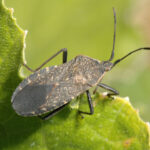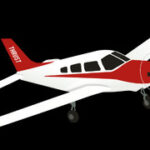It’s a common and often startling experience for drivers: a bird suddenly darts out in front of your car, sometimes leading to a tragic collision. While it might seem like birds are intentionally playing a dangerous game of chicken, the reality is far more nuanced. Millions of birds are killed each year in collisions with vehicles, and understanding why birds fly in front of cars is crucial for both bird conservation and road safety.
Accidents Happen: The Element of Surprise
One of the primary reasons for bird-vehicle collisions is simply accident. Cars move at speeds that are much faster than birds are accustomed to in their natural environment. Low-flying birds, especially those near roadsides, can be caught completely off guard by the rapid approach of a vehicle. The suddenness of the impact often leaves them no time to react and avoid a collision. It’s not a ‘death wish’ on the bird’s part, but rather a tragic misjudgment of speed and distance.
Misinterpreting Reflections and Glass
Birds have different visual perception than humans, and one significant factor is their difficulty in perceiving glass. They often cannot recognize glass as a solid barrier. This leads to birds flying into windows, and similarly, they can misinterpret car windshields. Reflections on the glass can create the illusion of open space or continued habitat, causing birds to fly towards the vehicle, not realizing the danger until it’s too late.
Hunting and Foraging Near Roadsides
Roadsides, especially in rural areas, can be surprisingly attractive foraging grounds for birds. Road verges often harbor insects, seeds, and small mammals like rodents. Birds that hunt insects in flight or ground-dwelling mammals may be drawn to these areas. When focused on hunting or foraging close to the ground, they may be less attentive to approaching traffic, putting them directly in the path of cars.
Territorial Behavior and Perceived Threats
In some instances, a bird’s territorial instincts might play a role in seemingly flying towards a car. Certain bird species are highly territorial, especially during breeding season. They may perceive a moving vehicle as a large, approaching intruder into their territory, especially near nest sites. In an attempt to defend their territory, they might instinctively fly towards the perceived threat, which unfortunately can be a car.
Common Locations for Bird-Car Collisions
Bird-vehicle collisions are more likely to occur in specific locations. High-speed highways, particularly those passing through rural or wooded areas, pose a significant risk. The combination of fast-moving traffic and natural bird habitats alongside these roads increases the chances of encounters. Roadsides with abundant vegetation, ditches, or fields are also hotspots, as these areas attract birds for foraging and nesting.
Which Bird Species Are Most Affected?
Not all bird species are equally vulnerable to vehicle collisions. Several factors influence a bird’s susceptibility, including their agility, size, and behavior.
Less Agile and Slower Birds: Larger, less maneuverable birds like pigeons, doves, ducks, geese, pheasants, and grouse are frequently victims of road traffic. Their slower flight and less agile movements make it harder for them to quickly avoid oncoming cars. Game birds, which often spend time on the ground, are also particularly vulnerable.
Smaller Birds and Brain Size: Research suggests that smaller birds, such as sparrows and warblers, are also commonly involved in collisions. Interestingly, studies have indicated a correlation between brain size and collision risk. Birds with smaller brains might have slower reaction times or less developed spatial awareness, making them more prone to accidents.
Territorial and Aggressive Species: Feisty and territorial birds that are prone to defending their space can also be at risk, as mentioned earlier, due to their instinct to challenge perceived threats, including vehicles.
Geographical Variations in Affected Species:
The specific bird species most affected by car collisions can vary geographically depending on local bird populations and common road environments.
- UK: Surveys in the UK have identified house sparrows, blackbirds, and wood pigeons as the most frequent casualties in vehicle collisions.
- US: In the United States, smaller birds like sparrows and warblers are commonly reported as victims.
- Australia: While specific data for Australia is less detailed, it’s known that a wide range of animals, including birds, mammals, and reptiles, are affected by road accidents.
What Should Drivers Do When a Bird Flies in Front of a Car?
Safety for humans must always be the priority on the road. Sudden swerving or hard braking to avoid a bird, especially at high speeds or in heavy traffic, can be incredibly dangerous and lead to more serious accidents involving other vehicles and potentially causing human injuries.
Prioritize Safe Driving: In most situations, it is not recommended to make drastic maneuvers to avoid hitting a bird. Maintaining control of your vehicle and staying in your lane is paramount.
When is it Safe to React? Only if you are driving at a slow speed, in light traffic, and have a clear space around you can you consider gently braking or slightly adjusting your course to avoid a bird. However, even in these situations, avoid sudden, jerky movements.
Drive Defensively and Be Aware: The best approach is to be a defensive driver, especially in areas where birds are likely to be present. Driving at or below the speed limit and being vigilant about your surroundings can give you slightly more time to react if a bird does appear suddenly.
What to Do If You Accidentally Strike a Bird
If you accidentally hit a bird with your car, your actions afterward can make a difference.
Check for Injury Safely: If it is safe to do so, pull over to the side of the road in a safe location. Check to see if the bird is injured.
Assess the Bird’s Condition: If the bird appears stunned but otherwise unharmed, it may simply need a few moments to recover before flying off. If the bird is visibly injured, unable to move properly, or in immediate danger on the road, further action is needed.
Safe Removal and Temporary Care: If the bird is injured and it’s safe to approach, gently move it from the road to prevent further injury from traffic. Place the bird in a cardboard box lined with soft material, like a towel or paper towels. Keep the box in a quiet, dark, and safe location.
Seek Professional Help: Contact a local wildlife rehabilitation center or animal rescue organization as soon as possible. They have the expertise and resources to properly care for injured wild birds. Do not attempt to treat a seriously injured bird yourself, as this can cause further harm and reduce its chances of recovery.
The Scale of the Problem: Bird Deaths from Cars Globally
Quantifying the exact number of birds killed by cars worldwide is extremely challenging, but estimates are staggering.
Global Estimates: While precise global figures are unavailable, it is estimated that hundreds of millions of birds perish in vehicle collisions each year around the world.
US Statistics: In the United States alone, estimates suggest that between 49 million and 340 million birds are killed by cars annually.
UK Data: A report from the UK in 1994 estimated at least 30 million bird deaths per year due to car collisions, with some estimates reaching as high as 80 million.
Australian Figures: While precise bird numbers are lacking, it is estimated that around 10 million animals in total (including birds, mammals, and reptiles) are killed on Australian roads each year.
Reducing Bird Deaths from Cars: What Can Be Done?
While completely eliminating bird-car collisions may be impossible, there are actions we can take to reduce the numbers.
Drive with Caution in Rural Areas: Be especially vigilant when driving on rural roads or highways that pass through natural habitats. Reduce speed and be more aware of wildlife near the road.
Adhere to Speed Limits: Following speed limits gives both drivers and birds more time to react and avoid collisions.
Avoid Throwing Food from Cars: Discarding food scraps from vehicles attracts rodents to roadsides, which in turn draws in birds of prey and other birds that hunt these rodents, increasing their risk of being hit by cars.
Habitat Considerations: Urban and road planning can incorporate bird-friendly landscaping and habitat management to reduce bird attraction to roadsides.
Do Birds of Prey Also Get Hit by Cars?
Yes, birds of prey are also susceptible to vehicle collisions. Their hunting behavior often puts them at risk.
Hunting Near Roads: Birds of prey frequently hunt rodents and other small mammals along roadsides, flying at low altitudes in search of prey. This low-flying hunting style makes them vulnerable to fast-moving vehicles.
Size and Survival: While their larger size may make birds of prey more robust than smaller birds in a collision, they are still at risk of injury and death. At lower speeds, they might survive an impact but still suffer injuries.
Barn Owls as an Example: Barn owls are one bird of prey species particularly known to be involved in vehicle collisions, likely due to their hunting habits in open areas and near roads.
Conclusion: Coexisting Safely
Bird-car collisions are a significant issue with ecological and ethical implications. Understanding why birds fly in front of cars—from accidental encounters to misinterpretations and hunting behaviors—is the first step towards mitigation. While drivers must prioritize human safety, increased awareness, cautious driving in bird-rich areas, and responsible actions if a collision occurs can all contribute to reducing the tragic toll of bird deaths on our roads and help us coexist more safely with wildlife.

